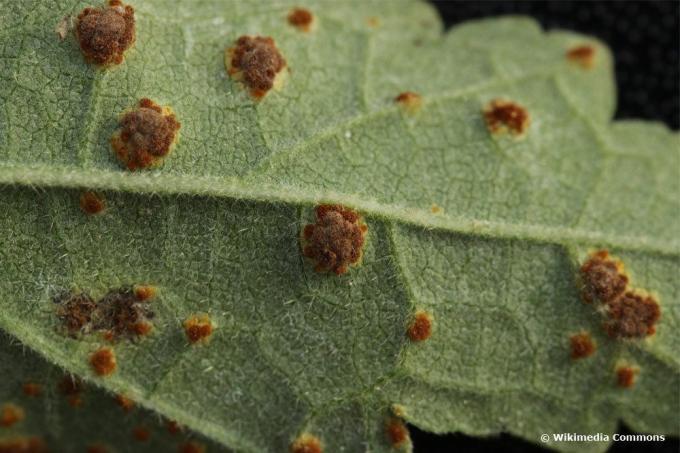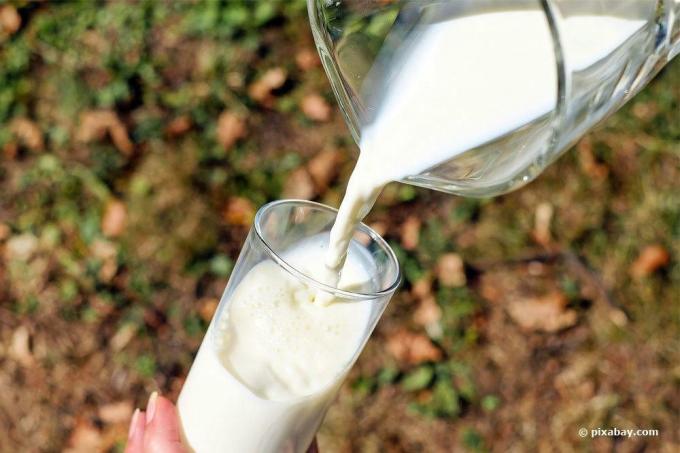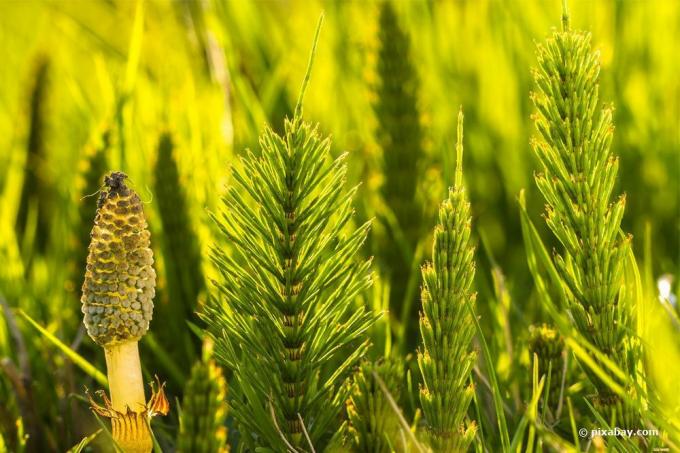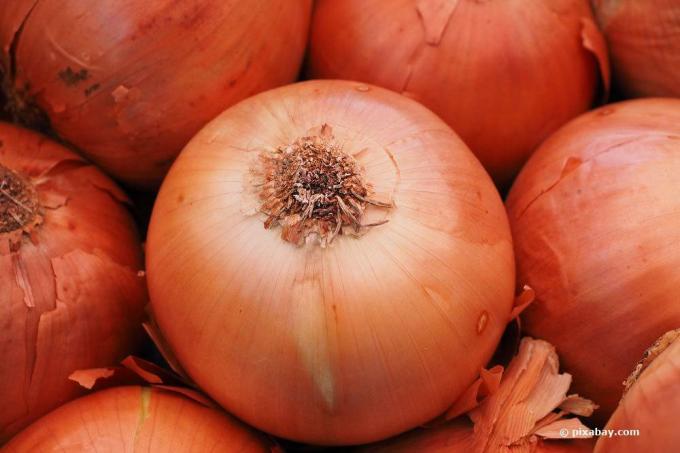
You can contact this user here.
English | español | français | italiano | македонски | മലയാളം | português | +/−, 2008-05-14 Puccinia malvacearum 60215, Cut by Plantopedia, CC BY-SA 3.0
table of contents
- Mallow rust widespread
- Recognize causes
- Fight mallow rust biologically
- Skimmed milk against pathogens
- Soda from the supermarket
- Bracken stock
- Broth made from compost
- Plant manure from field horsetail
- Yarrow broth
- Garlic tea
- Onion stock
The colorful flowers of the mallow (Malva), which grow up to three meters high, can add magical accents in the garden from late summer to autumn. These plants are particularly suitable for farm and wild gardens. Even if the mallow are largely easy to care for and robust, they are sometimes attacked by mallow rust, which must be combated.
Mallow rust widespread
Mallow rust (Puccinia malvacearum), which is widespread worldwide, is a dreaded fungal disease among hobby gardeners. It can appear in early spring after the first leaves have sprouted. At the first sign, action must be taken as quickly as possible to prevent this dangerous fungal disease from spreading. This includes
- wart-shaped structures on the underside of the leaf
- Pustules reddish-yellow in color
- yellow-brownish spots on the upper side of the leaf
As a result of the disease, the leaf tissue turns yellow, later brown. The leaves begin to wither and eventually fall off. If it has already come to that, the infected leaves must be disposed of immediately, but not on the compost, but in the residual waste. These pustules on the underside of the leaf contain the spore systems of the fungi, which are used for reproduction. You can overwinter there without further ado and become active again next spring. Disposal is therefore imperative to prevent the fungus from spreading to other plants or in the soil.
Note: Mallow plants with double flowers are particularly at risk. However, the fungus does not stop at summer flowers, mallow, pelargonium, silver linden or rose marshmallow.
Recognize causes
The disease is a mushroom that belongs to the order of rust fungi (Puccinales). This fungus is extremely resistant. The protruding spore beds on the underside of the leaf appear like a nest there. The fungal mycelium of the mallow rust grows into the storage tissue of the affected plants. There the Puccinia malvacearum feeds on the existing plant nutrients and thus removes them from the plants.

When the spore nests break open, the individual spores are then released and can find their way into the air. However, the disease can also be introduced when new young plants are bought. It is therefore advisable to check them carefully before purchasing. There are also other causes for the development and favoring of mallow rust such as
- a warm, rainy and sheltered location
- too high humidity
- too little distance between plants
- no drying of the leaves after downpours
High humidity and warm weather form an excellent basis for the fungus to spread and multiply.
Note: The mallow fungus can overwinter well in the plants and then break out in early spring under suitable weather conditions.
Fight mallow rust biologically
To treat affected plants, it is not always necessary to resort to the chemical club. We should always act in favor of the environment. Fight the Puccinia malvacearum biologically without any chemicals, can be done with one or the other home remedy. Not only milk or baking soda do a good job here, but also different ones that you have prepared yourself Plant manure can not only combat, but also strengthen the plants at the same time can be used. Below is a small list of tried and tested home remedies and their use.
Skimmed milk against pathogens
Every child knows that milk is healthy, but not only for humans. Skimmed milk, buttermilk or whey can also be used successfully to combat various plant diseases. The lactic acid bacteria contained in the milk take on the fight against the mallow fungus. Not only that, at the same time the treated plant receives a small strengthening of the immune system through the lecithin and sodium phosphate contained in the milk.
However, only low-fat fresh milk, buttermilk or whey should be used for this measure. Long-life milk is not really suitable here, as the microorganisms contained in the milk are no longer active and therefore no corresponding effect is achieved.

The application must always be diluted with water in a ratio of 1: 8. In other words, 100 milliliters of milk are mixed with 800 milliliters of water. The period of application of the mixture depends on the prevailing weather:
- Repeat every 10 days in damp weather
- every 3 to 4 weeks in dry weather
If you want to be on the safe side, you can also spray the milk-water mixture on the plant once a week as a preventive measure.
Tip: Raw milk directly from the farmer or from the health food store is best.
Soda from the supermarket
Another tried and tested home remedy to combat mallow rust biologically is a lye made from baking soda (sodium hydrogen carbonate). For the production of this caustic soda are required
- 1/2 teaspoon baking soda and
- 1 liter of water
For better effectiveness and adhesion to the plant, the caustic soda can still be used
- 1/4 teaspoon of grated curd soap and
- 1 teaspoon of cooking oil, for example sunflower oil
can be added. The mixture should be warmed up a little beforehand and then the grated curd soap should be stirred in until it has completely dissolved. Only then is the oil added. The application takes place every two weeks.
Note: The caustic soda produced in this way is also effective against powdery mildew, star soot and aphid infestation. In addition, baking soda is for many can be used for other purposes.
Bracken stock
Fronds fresh or dried from worm fern or bracken are particularly suitable here. The preparation of the brew is usually relatively easy. Are needed
- 100 grams of fresh fully developed fronds
- alternatively 10 to 20 grams of dried leaves
- 1 liter of water

When all the ingredients are in place, the next step is to prepare the vegetable stock:
- Roughly cut the leaves
- then start with stale, if possible rainwater
- Cover and leave to stand for 24 hours
- then simmer everything gently for 15 to 30 minutes
- strain, squeeze out plant residues well
- Fill into syringe or spray bottle
With the amount of these ingredients, a 1/4 liter of plant stock is created. This is used undiluted. It should be warm, lightly covered in the mornings. windless and not sunny days. It is advisable to repeat this measure after two to three weeks. The brew also works against a snail plague.
Broth made from compost
A spray mixture made from compost also has an excellent effect on combating mallow rust. It should be used especially when Puccinia malvacearum is still in its infancy. To manufacture is required
- 0.5 liters of well-matured compost
- 2.5 liters of water
You use these ingredients to make a porridge. This has to drag for at least a week. In between, the whole thing is stirred daily and roughly filtered after a week. Every three to four days, the prepared broth can then be sprayed directly onto the leaves and also onto the soil around the plants.
Plant manure from field horsetail
The silicic acid contained in the plant not only works against mallow rust, but is also a strengthening for the affected plant. The acid strengthens the plant cells and makes them less susceptible to diseases and Pests. However, the required parts of the plant should only be collected by the end of July, as the silica content then decreases. It can be used fresh or dried. You need:
- 300 grams of fresh plant parts
- alternatively 30 grams dried
- 2 liters of water
To make the liquid manure, the parts of the plant are chopped up with secateurs or a sharp knife and soaked in the water. Then everything has to be done
- Draw for 24 hours
- then simmer on a low flame for 30 minutes
- strain

The liquid manure must be diluted with water in a ratio of 1: 5. If the infestation is severe, the plants should be treated daily for three days. A 14-day spray from spring to summer can also help prevent mallow rust.
Note: A broth made from field horsetail can also be used against scab, brown rot, gray mold and mite infestation.
Yarrow broth
Such a broth also does a good job of combating mallow rust, but also of frizz disease. It also contains a high proportion of silica and potassium. In addition, the plant receives fertilizer and the cell tissue is strengthened. Mainly flowers should be used. These can be collected from June to September and used fresh or dried. Are needed
- 200 grams of fresh or 20 grams of dried flowers
- 1 liter of water
The preparation of the broth, like the manure, is made from field horsetail. However, the extract must be diluted with water in a ratio of 1: 9. The application can be made as required.
Garlic tea
Garlic is not only healthy for humans, but can also be used to combat various plant diseases such as Puccinia malvacearum. This will be
- 70 grams of crushed garlic
- pour a liter of boiling water over it and
- Left to infuse for 5 hours and strained
The first spray can take place immediately after the first leaves have sprout. Another treatment will take place after a month.
Onion stock

Not to be forgotten is the healing properties of onions, which can also be used on plants. To manufacture are required
- 150 grams of onions or peel
- 2 liters of water
The two ends of the onion are cut off and quartered with the skin. Then the individual slices are divided into pieces and placed in a saucepan together with the peel and the onion ends and poured boiling water over them. Everything has to draw for 30 minutes and is then strained. The brew is sprayed undiluted in the case of an existing illness. As a preventive measure, you can dilute the broth in a ratio of 1:10 with water and use it every 14 days after it has sprouted. The leaves and the soil are carefully sprayed.
Tip: When fighting the mallow rust, you must carefully spray all the leaves on the top and bottom with the respective home remedy. If possible, also the soil around the plant.



